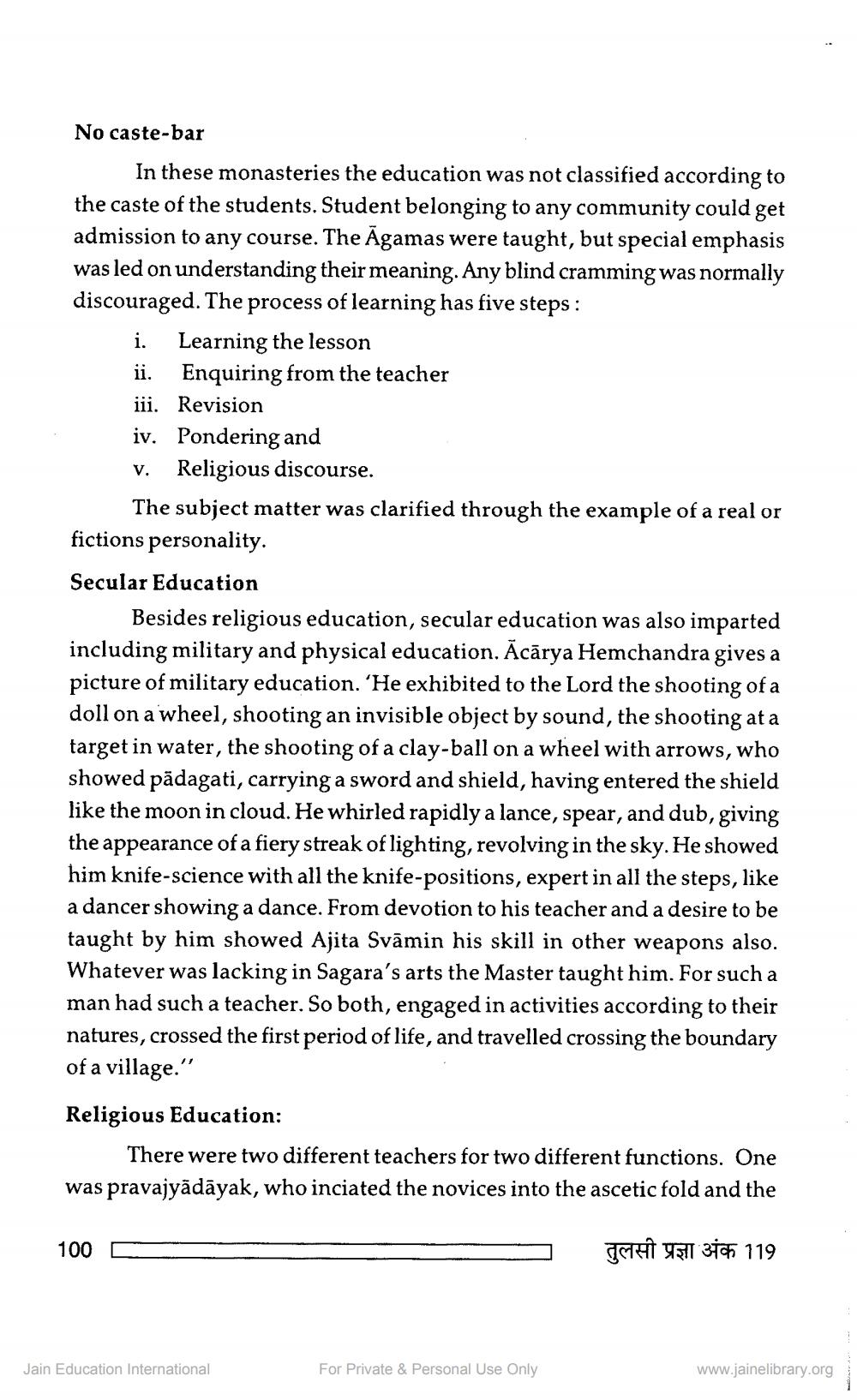________________
No caste-bar
In these monasteries the education was not classified according to the caste of the students. Student belonging to any community could get admission to any course. The Āgamas were taught, but special emphasis was led on understanding their meaning. Any blind cramming was normally discouraged. The process of learning has five steps:
i. Learning the lesson ii. Enquiring from the teacher iii. Revision iv. Pondering and V. Religious discourse.
The subject matter was clarified through the example of a real or fictions personality. Secular Education
Besides religious education, secular education was also imparted including military and physical education. ācārya Hemchandra gives a picture of military education. 'He exhibited to the Lord the shooting of a doll on a wheel, shooting an invisible object by sound, the shooting at a target in water, the shooting of a clay-ball on a wheel with arrows, who showed pädagati, carrying a sword and shield, having entered the shield like the moon in cloud. He whirled rapidly a lance, spear, and dub, giving the appearance of a fiery streak of lighting, revolving in the sky. He showed him knife-science with all the knife-positions, expert in all the steps, like a dancer showing a dance. From devotion to his teacher and a desire to be taught by him showed Ajita Svāmin his skill in other weapons also. Whatever was lacking in Sagara's arts the Master taught him. For such a man had such a teacher. So both, engaged in activities according to their natures, crossed the first period of life, and travelled crossing the boundary of a village." Religious Education:
There were two different teachers for two different functions. One was pravajyādāyak, who inciated the novices into the ascetic fold and the
100
-
=
IC
1311 310 119
Jain Education International
For Private & Personal Use Only
www.jainelibrary.org




